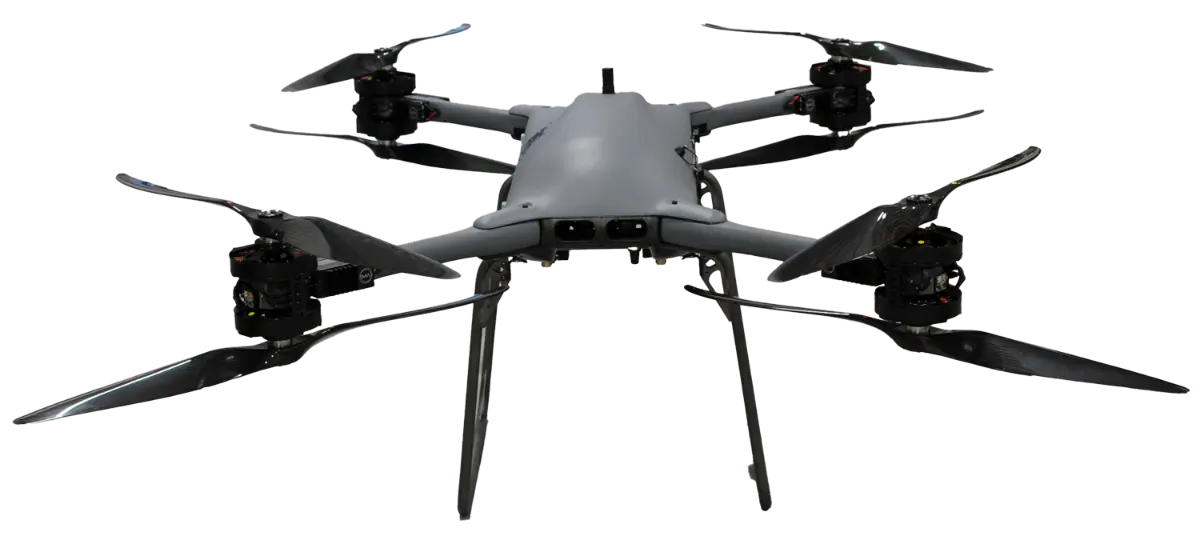.
TRV

TRV Notice
The TRV class of vehicles represent the latest in drone technology, and can be dangerous if not properly used and operated. This site provides important safety and hazard information, as well as links to the latest versions of vehicle operating manuals and checklists. This notice and associated warning and reference material may be updated, and it is important to regularly check to assure you have the latest information.
TRV Warning
WARNING!
- The TRV has rotating blades which can cause injury or death. Use vehicle with extreme caution and never place any part of your body or limbs in the propeller/rotor path whenever the vehicle is powered.
- The TRV incorporates a high-voltage electrical drivetrain and care must be used whenever working the vehicle and/or the vehicle batteries.
- The TRV uses lithium batteries, and represent a fire hazard if misused or damaged.
- The TRV is meant to operate as an unmanned vehicle. NEVER attempt to fly the TRV with anyone on the vehicle.
- The TRV has NOT been tested or approved for flight in all environments and weather conditions. Care must be taken to adhere to ALL safety restrictions contained in the User Manual and any applicable US military restrictions.
- The TRV is a prototype system and should be operated ONLY by the following trained and experience personnel:
- Malloy Aeronautics personnel,
- SURVICE Engineering Company (“SURVICE”) personnel,
- SURVICE subcontractors who have been trained/approved by SURVICE,
- DoD contractors supporting a DoD contract who have been trained/approved by SURVICE, or
- U.S. Government personnel who have been trained/approved by SURVICE.
- SURVICE may approve operators trained by subcontractors or US Government personnel if the training provided meets or exceeds the safety provisions of SURVICE and Malloy Aeronautics. Operation of the TRV by members of the general public is strictly prohibited.
When operating in US military-controlled airspace:
- Read the vehicle User Manual.
- Read the Air Worthiness Release (AWR) and/or Interim Flight Clearance (IFC).
- Perform vehicle pre-flight checks.
- Operate the vehicle within the parameters defined in the User Manual and the AWR/IFC.
When operating in FAA-controlled airspace or any other airspace not controlled by the US military:
- Read the vehicle User Manual.
- Abide by all FAA regulations or local government regulations as applicable.
- Have pilot with appropriate license operate or oversee operations per regulations.
- Perform vehicle pre-flight checks.
- Operate the vehicle within the parameters defined in the User Manual.
DISCLAIMER
USER OPERATES TRVs AT USER’S OWN RISK. IN NO EVENT SHALL SURVICE BE LIABLE FOR ANY DIRECT, INDIRECT, INCIDENTAL, SPECIAL, EXEMPLARY, OR CONSEQUENTIAL DAMAGES HOWEVER CAUSED AND ON ANY THEORY OF LIABILITY, WHETHER IN CONTRACT, STRICT LIABILITY, OR TORT (INCLUDING NEGLIGENCE OR OTHERWISE) ARISING IN ANY WAY OUT OF THE USE OF VEHICLE(s), EVEN IF ADVISED OF THE POSSIBILITY OF SUCH DAMAGE. USER AGREES TO AND ACCEPTS THIS DISCLAIMER BY ITS USE OF THE TRV.